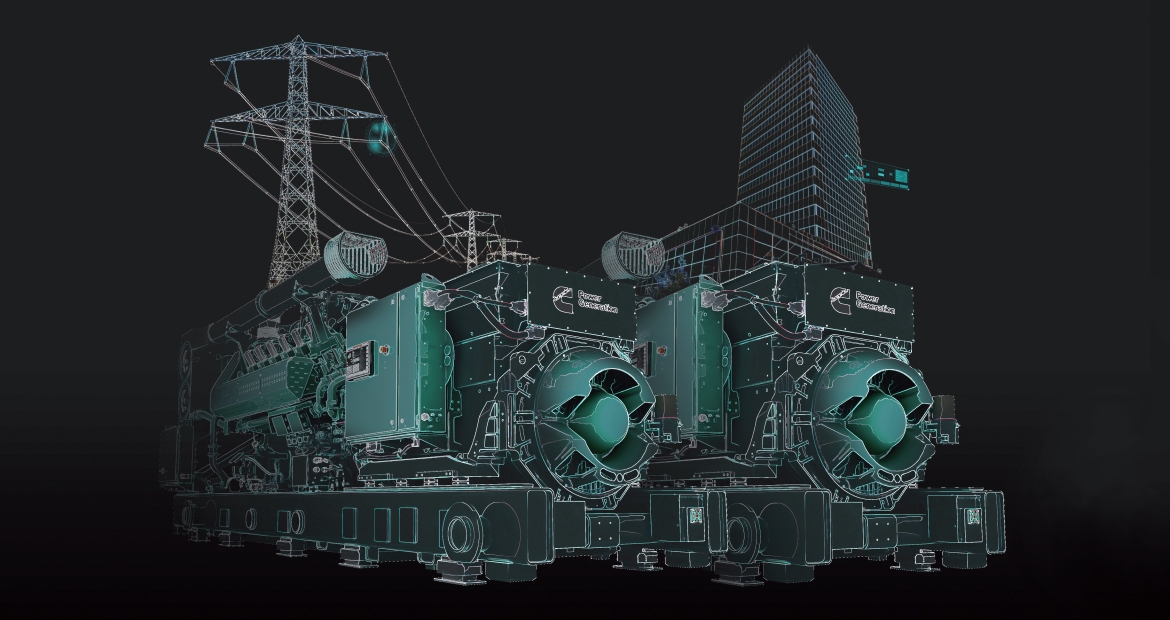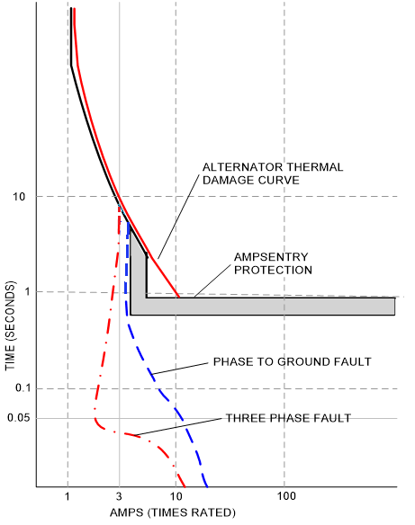AmpSentry™: The ultimate protection
Hospitals, data centers, water/wastewater, and a wide range of other critical infrastructure and institutional facilities that require continuous or near continuous uptime, typically utilize a generator set for a reliable backup power when the normal power source is unavailable.
By Cummins Europe, Global Power Technology Leader

For over one hundred years Cummins Power Generation has been at the leading edge of generator set design and innovation, helping the world push forward to meet customer, market, and environmental demands.
 It is the spirit of constant innovation that keeps Cummins Power Generation at the pinnacle of the power, and in that spirit comes AmpSentry™, which is the Cummins trade-marked name for the protection functions within the generator set control; the PowerCommand® Control. AmpSentry™ as a utility grade protective relay which gives the designer the assurance of reliable protection when it comes to protecting the generator set and loads.
It is the spirit of constant innovation that keeps Cummins Power Generation at the pinnacle of the power, and in that spirit comes AmpSentry™, which is the Cummins trade-marked name for the protection functions within the generator set control; the PowerCommand® Control. AmpSentry™ as a utility grade protective relay which gives the designer the assurance of reliable protection when it comes to protecting the generator set and loads.
AmpSentry™ Protective Relay Functions
Cummins Power Generation generator sets with AmpSentry™ protective relay provide the alternator protection that is required by codes and standards and by facility owners desiring good alternator protection. Because AmpSentry™ protective relay is specifically designed for alternator protection, it can provide necessary protection without the compromises and limitations that are necessary with other approaches. Some of AmpSentry™ protection elements and advantages are:
- Ampsentry™ has been designed to identify and regulate fault currents within the thermal damage curve of the alternator, protecting the alternator and permitting the downstream fault to clear.
- To minimize severity of short-circuit faults, AmpSentry™ adjusts the shutdown time to protect downstream equipment. The shutdown time from high severity to low are listed below:
Short Circuit Failure: Shutdown Time: LINE-NEUTRAL (L-N) 2 Sec LINE-LINE (L-L) 5 Sec 3-PHASE SHORT 10 Sec - AmpSentry™ “remembers” the heating effects of a fault and accelerates tripping when a subsequent fault occurs before the alternator has a chance to properly cooldown. Consequently, an inexperienced operator would not be able to cause an alternator failure by repeatedly starting and short circuiting a generator set.
- Overcurrent protection which is the most critical protection function in an alternator protection scheme, because most modern alternators (those with excitation support systems such as permanent magnet generator driven voltage regulators) have the inherent ability to drive the alternator to destruction on a short circuit or ground fault condition. Thus, the overcurrent protection function must be matched to the thermal damage curve of the alternator. AmpSentry™ perfectly matches the alternator thermal damage curve.
An additional feature of AmpSentry™ is Maintenance Mode – which is an important safety feature that provides protection to personnel from the threat of arc flash energy. When maintenance mode is enabled AmpSentry shuts down the generator set (by shutting off fuel and excitation) as soon as it recognizes that current on any phase has exceeded 300% of the generator set rating. Tests have demonstrated that excitation is shut off within 50ms of the occurrence of the fault; thereby, greatly reducing the energy available to support an arc flash.
How AmpSentry™ works
Overload regulation:
When the PowerCommand® Control measures current in any phase as exceeding 110% of the generator set standby rating a current summing integral will be activated so that the generator will shut down based on the AmpSentry™ time-current curve. This allows AmpSentry™ to protect the alternator and the feeder cables connected to the alternator.
Fault current regulation:
When the PowerCommand® Control measures current in any phase as exceeding 300% of the generator set standby rating the control recognizes that this is a fault condition and begins to regulate current in the phase with the highest level of current to 300% of rated current. The purpose of this is to allow a downstream overcurrent protection device (OCPD) to clear the fault, maintaining a coordinated system. AmpSentry™ overcurrent protection function is in effect during a fault and will shut down the generator set based on the time current curve if the fault is still active.
In summary
Protecting the generator set with an effective and reliable means while still maintaining a coordinated system is essential in all power system designs. The PowerCommand® generator sets incorporate, as standard, a highly reliable protective functions that are designed to protect the generator set and provide a nominal level of protection to the load without making a significant impact on reliability. These protective functions are all under the name of AmpSentry™.
Cummins Power Generation generator sets with AmpSentry™ protective relay provide the alternator protection that is required by codes and standards and by facility owners desiring good alternator protection. Because AmpSentry™ protective relay is specifically designed for alternator protection, it can provide necessary protection without the compromises and limitations that are necessary with other approaches.
A special thank you to Ahmed Jaffer (Senior Global Product Manager), Hassan Obeid (Global Technical Advisor) and Andrew Frazer (Consultant Development Leader).
Author Profiles
Cummins Europe, Global Power Technology Leader
Cummins Inc. opened its first site in Europe in 1956. Today it has 12 manufacturing sites and more than 10,800 employees in the region. Cummins works hard to provide advanced technologies supported by a long-established service network across Europe. Cummins is committed to investing in Europe through Research and Technology, ensuring Cummins’ technical experts are developing innovations of the future.